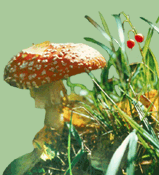Is there room in the UNESCO World Heritage List for the North-Estonian Klint?
Hella Kink describes the protected sections of the North-Estonian Klint that were proposed to the UNESCO World Heritage List a few years ago, and Urve Sinijärv comments on the reasons why the application was withdrawn. The proposed list of protected sections consists of 8 landscape protection areas along the Norh-Estonian coast. The klint is valuable for many reasons, not just because of its geological uniqueness. The article gives an overview of the different values of the klint sections. However, the IUCN responsible for estimating the values for UNESCO, did not give an encouraging feedback to the proposal by claiming that the klint had major regional importance, but as such did not qualify for international attention. Therefore the studies for indicating the special features of the klint will continue, until we can be entirely certain that it will qualify for the world heritage list.
Estonian Nature enquires
Timo Palo writes about the participation of two Estonians in an international scientific expedition to the Arctic Sea.
Kalev Sepp explains the essence of the European Green Corridor.
A larch-related surprise from Estonia
Heldur Sander and Alar Läänelaid have done some research on japanese and hybrid larches growing in our parks and are now confuting the beliefs of dendrologists all over the world. It was believed that the european-japanese larch developed in Europe as natural hybrid species during the 20th century, since the first japanese larches were introduced to Europe since 1861. Surprisingly, the age studies of several larches in Estonia indicate that some of our oldest hybrid larches are over 200 years old. Based on the results, we have to believe that the japanese larch was introduced to Europe much earlier than previously believed. Moreover, the worlds two oldest hybrid larches growing in Estonia may also easily be the only proof that the japanese larch must have been introduced to Europe no later than in the middle of 18th century.
Stone fence, both modern and commonplace
Madis Rennu takes a glance at part of the heritage culture that is practiced even nowadays now mostly based on the support of agricultural measures or just for fun. The reasons and genesis of stone fences have historically varied, but have mostly stood on two reasons: 1) the need to store stones gathered from the fields and 2) the need for a fence, which has actually been a scenondary motive. The article is mostly based on memories and interviews collected from the Koonga community in northern Pärnu County. Exceptions and interesting examples related to stone fences give as a good overview of our heritage culture.
Which places and whom do the Polish earthworms endanger?
Tarmo Timm and Mari Ivask are rather convinced that the earthworms imported from Poland as fish-feed are not a danger to our strong natural earthworm communities. We do not have any endemic earthworm species and most of the species are rather late newcomers anyway. Besides, our knowledge of the earth fauna is so limited that we have no data on possible changes. Moreover, new earth species are constantly introduced with the import of plants, as well as with peoples feet and cars. As of now, there is no need to restrict the sale of Polish earthworms.
Pihla-Kaibaldi Nature Protection Area
Taimo Aasma takes the reader to the largest protected area of the Hiiumaa Island, amongst former moors and bogs. The protected area lies in the center of the island, an almost entirely natural region. The core of the protected area is made up of the Pihla bog, surrounded by smaller swamps, forested dunes and diverse old-growth forests. The Kaibaldi moor is the largest open sand area in Estonia. The whole protected area is a valuable habitat for many endangered species of fauna and flora.
European rarities in Estonia: Hazel Grouse
Ene Viht looks for reasons why the Hazel Grouse, one of the natives of Estonian nature, is constatntly declining in numbers. Because of human activity, the distribution area of the Hazel Grouse is shifting northwards everywhere in Europe. The article gives a detailed overview of the biology and habits of the species, and considers possible threats (mostly intensive deforestation) and protection mechanisms.
Interview: half a century on nature protection trail
Ann Marvet has interviewed Jaan Remmel, a geographer and one of the founders of he Estonian Nature Protection Society.
Hiking trail: Hiiumaa as an armoured sea warrior
Urmas Selirand introduces the diverse sights of war history on the calm Hiiumaa island. There are numerous coast defense batteries built for the World Wars I and II and several more military points. The article gives a short war history related to Hiiumaa and maps all the bigger sights of interest. The best-known ones are situated at Tahkuna, Sõru and Ristna.
Tree of the Year: some willows are like grass
Ülle Reier observes the native and foreign dwarf trees, who feel especially at home in the tundra region north of us. The article describes the unique biology and adaptations of the small trees fighting for life in the tough climate and pays closer attention to 4 species found in European tundras, be it Arctic tundra or Alpine tundras.
Quarrelsome Common Terns
Sven Zaèek shares his impressions and photos of the quarrelsome birds, which are very keen on their nesting areas. They are ready to attack large birds of prey and even humans in the interest of the safety of their nests. They usually nest in colonies, making it easier to guard their territory. The Common Terns are really model parents, always ready to fight with anyone.
| 

![[IN ENGLISH]](images/gb.gif)






